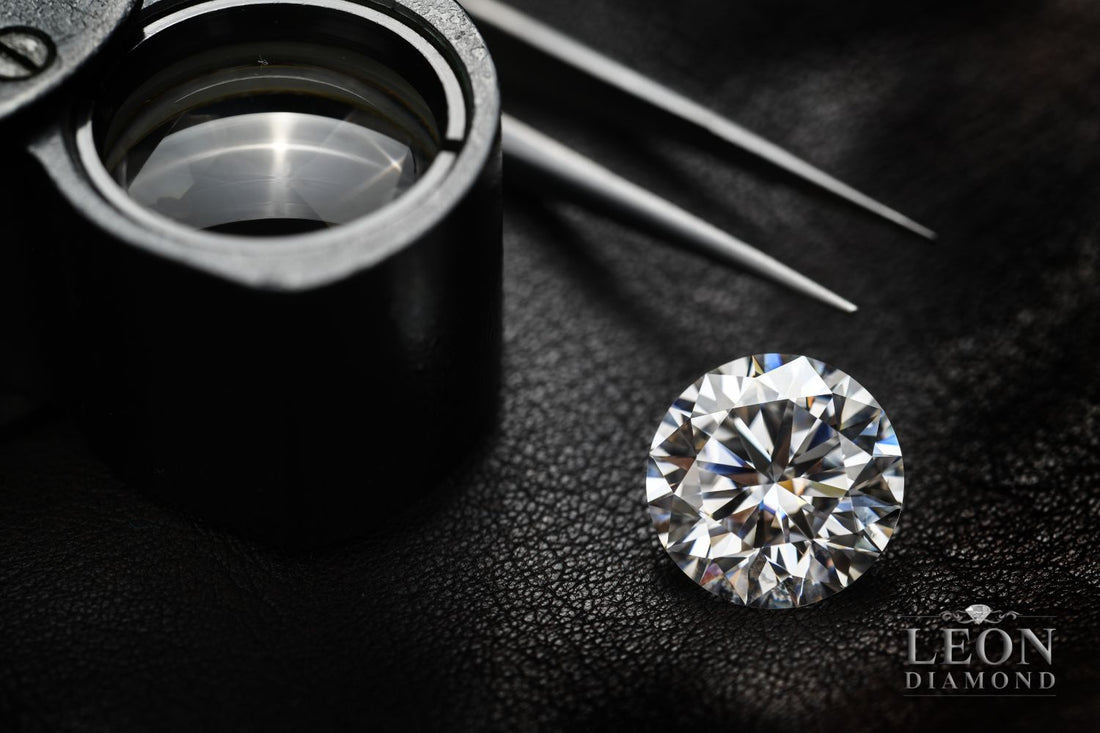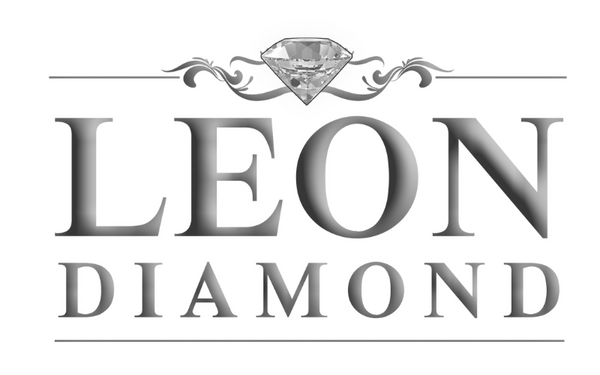
Choosing Ethical Diamonds: A Complete Guide to Conflict-Free Stones
Share
Ethical diamonds are sourced through responsible practices that uphold human rights and protect the environment. Traditional diamond mining has been linked to exploitation, human rights abuses, and environmental harm, prompting the need for ethical standards and certifications. Ethical diamonds are primarily those verified as "conflict-free" under the Kimberley Process Certification Scheme (KPCS), which prevents funding for violent conflicts.
Beyond conflict-free status, ethical sourcing also covers transparency in mining, worker conditions, environmental sustainability, and fair treatment of local communities. Additionally, lab-grown and Fairmined diamonds offer sustainable, transparent alternatives to mined diamonds.
Understanding the Varieties of Ethical Diamonds

There are several types of ethical diamonds that differ based on their sourcing and production methods. Each type adheres to specific ethical and environmental standards, ensuring the stone's integrity. Below are the most common types of ethical diamonds available on the market:
1. Conflict-Free Diamonds
Conflict-free diamonds are mined and sold in compliance with the Kimberley Process Certification Scheme (KPCS). The Kimberley Process was established to prevent the sale of diamonds that fund armed conflict. These diamonds are rigorously monitored and certified, ensuring they do not come from war zones where they could potentially finance violence.
While conflict-free diamonds have been a significant step toward ethical diamond sourcing, the Kimberley Process has its limitations, as it only addresses issues related to conflict financing and does not guarantee fair labor practices or environmental sustainability. Therefore, buyers may want to consider additional ethical certifications to ensure a higher standard of responsibility.
2. Lab-Grown Diamonds
Lab-grown diamonds are created through advanced technological processes that replicate the conditions under which natural diamonds form. They are produced using two main methods: High Pressure High Temperature (HPHT) and Chemical Vapor Deposition (CVD). These diamonds are chemically identical to mined diamonds and are just as beautiful and durable, with the added benefit of being environmentally friendly and ethically produced.
Since lab-grown diamonds don’t require mining, they avoid the environmental degradation associated with diamond extraction. Furthermore, these diamonds are free from the human rights violations that can occur in mining operations. As a result, they are often considered the most ethical choice in the diamond industry.
3. Fairmined Diamonds
Fairmined diamonds are sourced from small-scale mining operations that comply with the Fairmined certification. Fairmined is a certification that ensures the ethical production of gold, platinum, and diamonds in artisanal and small-scale mines. These mines must meet strict standards that ensure fair wages, community development, and environmental protection.
Fairmined certification provides transparency and ensures that miners receive a fair share of profits, which is often not the case in traditional diamond mining operations. By choosing Fairmined diamonds, buyers help support local communities and reduce the environmental footprint of mining.
4. Recycled Diamonds
Recycled diamonds are diamonds that have been repurposed from old jewelry or other sources. These diamonds are cleaned, re-cut, and reused in new designs, reducing the need for new mining. Recycling diamonds not only preserves the value of existing stones but also prevents the environmental and social costs associated with new diamond mining.
Recycled diamonds are an excellent choice for those looking to reduce their environmental impact while still owning a genuine diamond. They are also often more affordable than newly mined or even lab-grown diamonds, making them an appealing option for conscious buyers.
The Versatility of Ethical Diamonds

Ethical diamonds, like traditional diamonds, are used in a variety of jewelry pieces. Whether for engagement rings, wedding bands, or other fine jewelry, ethical diamonds can be integrated into any design while ensuring that the stone is responsibly sourced. Here are some common uses of ethical diamonds:
1. Engagement Rings
Engagement rings are the most popular type of jewelry for which people choose ethical diamonds. Choosing an ethical diamond for an engagement ring ensures that the symbolism of commitment and love is not associated with exploitation or harm. Whether opting for a conflict-free diamond, a lab-grown stone, or a Fairmined diamond, an ethical diamond can be both a meaningful and beautiful choice for the couple.
2. Wedding Bands
Just as with engagement rings, wedding bands are often chosen with ethical diamonds to signify the enduring commitment of the marriage. These diamonds can be set in a variety of band styles, from traditional solitaires to modern pavé settings, making them a versatile option for any wedding style.
3. Custom Jewelry
Many consumers are now turning to ethical diamonds for custom jewelry pieces. Whether you’re designing a necklace, earrings, or a bracelet, ethical diamonds allow you to create a unique piece that aligns with your values. Custom pieces can showcase your personal style while promoting sustainability and social responsibility.
4. Investment Pieces
Some buyers also view ethical diamonds as an investment. Since the demand for ethically sourced diamonds continues to grow, these stones may appreciate in value over time. Additionally, ethical diamonds provide peace of mind for those looking to make an investment that aligns with their ethical standards.
Factors to Consider When Choosing Ethical Diamonds

When selecting an ethical diamond, there are several factors that you should take into account to ensure that you are making a responsible purchase. The following considerations will help guide you in choosing the best ethical diamond for your needs:
1. Certification
Look for certifications from organizations like the Kimberley Process, Fairmined, and the Responsible Jewellery Council. These certifications ensure that the diamond meets high ethical standards related to human rights, environmental sustainability, and transparency.
2. The Origin of the Diamond
It’s essential to know the source of the diamond. Ethical diamonds should come from mines or laboratories that adhere to strict standards regarding the treatment of workers and environmental practices. Some diamond vendors provide detailed information about the origin of their stones, which can be helpful in making an informed decision.
3. Environmental Impact
Consider the environmental impact of the diamond’s production. Lab-grown diamonds are generally considered more sustainable than mined diamonds, as they require fewer natural resources and produce fewer greenhouse gas emissions. However, even mined ethical diamonds can have lower environmental footprints if they come from sources that prioritize sustainability.
4. Price
Ethical diamonds and jewelry are often more expensive than traditional diamonds due to the added costs of sourcing, certification, and labor practices. However, lab-grown diamonds may be more affordable compared to mined stones, making them an accessible option for ethical consumers.
5. Transparency
Ensure that the jeweler or retailer is transparent about the sourcing and certification of the diamond. Trustworthy retailers will provide detailed information about the diamond’s origin, production methods, and ethical certifications, helping you make a well-informed choice.
Frequently Asked Questions
What is an ethical or conflict-free diamond?
An ethical or conflict-free diamond is one that has been mined and traded under strict regulations that prioritize human rights, fair labor practices, and environmental sustainability. These diamonds are not used to fund wars or exploit communities, and their journey from mine to market is transparent and traceable.
Why is it important to choose ethical diamonds?
Choosing ethical diamonds helps prevent the funding of armed conflicts, human rights abuses, and environmental harm. By selecting conflict-free stones, you support fair wages, safe working conditions, and responsible environmental practices, making a positive impact on both people and the planet.
How can I verify if a diamond is truly conflict-free?
To ensure a diamond is conflict-free, ask for certifications like the Kimberley Process Certificate, which tracks diamonds from mine to market to prevent the sale of conflict stones. Also, request documentation such as GIA certificates with Diamond Origin Reports, and inquire about the diamond’s origin and the jeweler’s ethical sourcing policies.
Are there additional ways to ensure a diamond is ethically sourced?
Yes. Shop with reputable retailers who go beyond minimum standards, offering full transparency about their supply chains and sometimes using blockchain technology for traceability. Some jewelers provide detailed “journey” reports or source diamonds from countries with strict environmental and labor regulations, such as Canada, Australia, or Russia.
Do ethical diamonds cost more, and are lab-grown diamonds a good alternative?
Ethical certification does not necessarily make a diamond more expensive; prices are influenced by quality, size, and other factors, not just sourcing. Lab-grown diamonds are generally considered ethical, as they are created in controlled environments with transparent origins and minimal environmental impact, making them a popular alternative for conscientious buyers.
A Commitment to a Better Future
Choosing an ethical diamond reflects a true commitment to responsible sourcing and sustainability. Whether selecting a conflict-free, lab-grown, or Fairmined stone, your decision supports human rights and environmental care.
Partnering with experts trusted for their craftsmanship and transparency, such as those at Leon Diamond, ensures each selection carries meaning beyond beauty. A carefully chosen diamond becomes a reflection of both personal style and ethical values.
With knowledge and the right guidance, every choice has the power to create a positive impact on the world.
